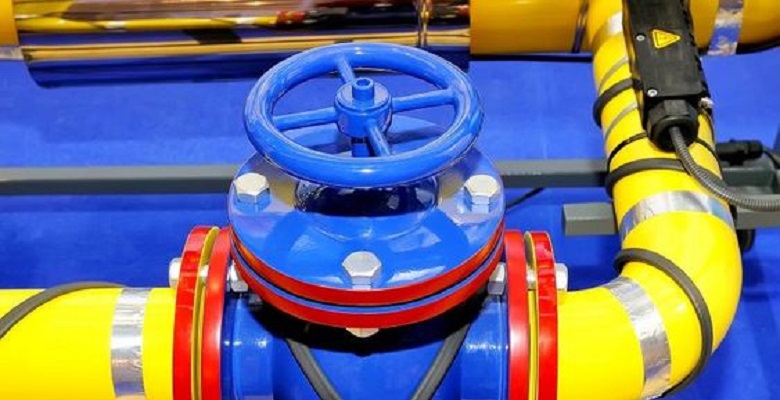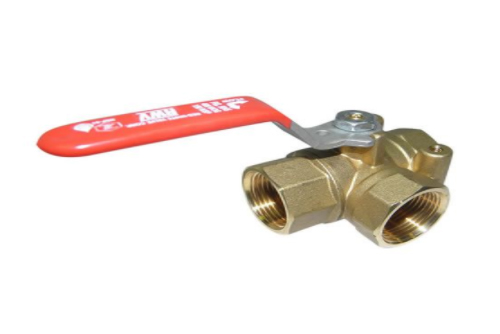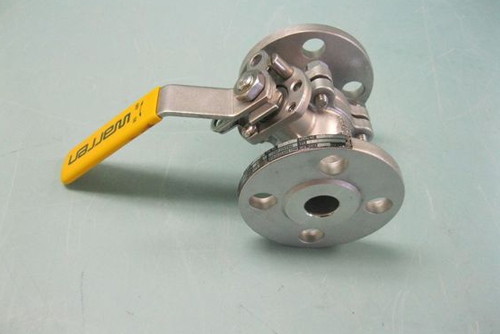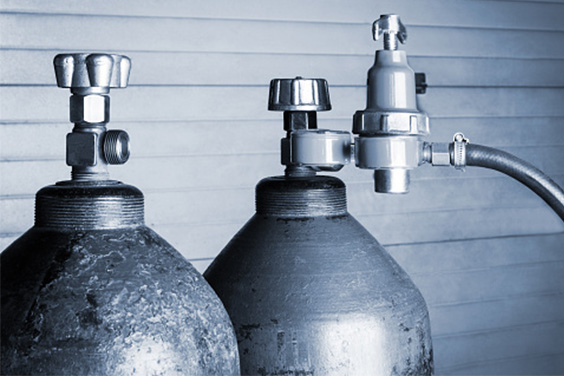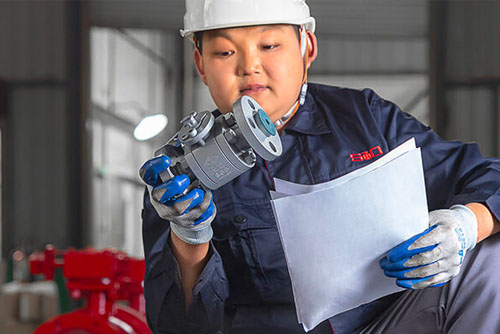
Floating Ball Valve Vs. Trunnion:What's Their Difference
Share:
Valves serve a lot of functions in varying sectors of the industry, and this is the reason there are so many versions of them. The designs and the shapes of these ball valves are not random, some are ball valve flange type, some are carbon steel ball valves. Each is made with a specific function in mind, and you simply can’t go around switching them for another task. Among the many valve types that exist, there are two that we are going to focus our attention on today; floating ball valves and trunnions.
We will explore what each of these is, how they function, the advantages of using each of them, and how they compare with each other in terms of design and applications. If you have been curious about floating ball valves and trunnions, this is for you.
What is a Floating Ball Valve?
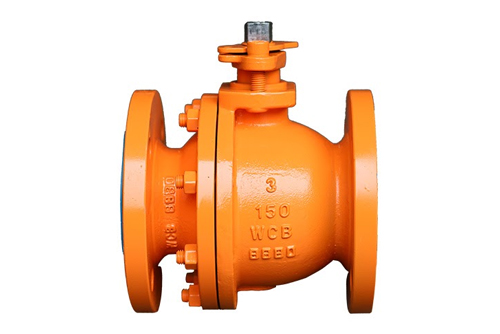
In a floating ball valve, the ball is held in place by the continued compression of two elastomeric seats that are acting against the ball. The ball itself has all the freedom it needs to continue floating within the valve body. The ball can also rotate a whole 90 degrees, thanks to the stem that’s connected to a slot at the top of the ball.
This steam also allows for considerable lateral movement of the ball that is triggered when there is upstream pressure that’s acting on the ball. This, in turn, produces a significant load on the ball, and it presses it against the downstream seat, and this furniture improves the tightness of the valve.
Advantages
There is very little flow resistance and thus makes the floating ball the ideal type of valve for pipelines and their systems that are used to transport heavy mediums that have high viscosity.
The floating ball valve has a simple structure that is easy to understand and operate. This design is what adds to its efficiency.
It has a good sealing performance that ensures no leaks are registered when the system is active. This makes it a cost-effective option since leaks are the leading cause of losses in the industry.
They can handle high pressures due to their flexibility. The ability of the ball to move within the valve as it pleases gives the floating ball valve the versatility needed to adapt to changing pressures and temperatures.
Disadvantages
Sometimes the floating ball inside the valve is unable to handle high pressure, especially if the valve surrounding it is too big as it leaves too much space for materials to pass through.
The weight of the floating ball tends to settle on the seal ring, and this can lead to an uneven positioning of the seal ring leading to formation, which in turn compromises its ability to function.
The torque created by the ball depends on friction; if you get the wrong balance, then the valve becomes faulty and eventually stops functioning altogether.
Applications
Emergency Shut-Off Systems: pipeline systems usually handle very volatile materials and having an emergency shutoff mechanism to evert danger is important. This is the role that floating ball valves play effectively as they are fast and easy to operate.
Water Systems: Floating ball valves are used in water systems to maintain high pressure that is able to sustain flows and stop air pockets from forming and interfering with the flow of water.
Pressure Relief: Sometimes, a pipeline may be damaged due to high pressure building up due to some fault in the system. The best way to counter this and provide pressure relief is through using floating ball valves that are equipped with an outlet valve, thanks to the floating ball.
How Does a Floating Ball Valve Work
The cupped seats that support valves form a tight seal with the ball, and the valve body is floating ball valves. The ball is suspended in the medium it controls and is held in place by cup-shaped seats, which are typically constructed of thermoplastic substances. Between the valve body and the ball, these seats make a firm seal.
Bi-directional sealing is possible with floating ball valves, which implies that the ball has the potential to move about freely to stop media flow in any direction. Steam, oil, water, gas, and petrochemicals are just a few of the applications for this kind of valve. In addition to that, these valves are also cost-effective, light in weight, and highly versatile.
A stem in the body of the valve links to a space at the upper end of the ball and permits the ball to pivot 90 degrees as part of the system. The downstream seat enhances the tightness of the seal of the valve, while the stem permits the ball to shift in a lateral position when upstream pressure applies to it. As a result, when fluid drifts in any direction, the valve can shut down.
When the ball is properly positioned in relation to the double ends of the valve, fluids can flow freely via the gap in the ball. When perpendicular, this gap closes off the valve. Fluid will still drift through this void in any other orientation. The floating ball valve’s primary characteristics are the sealing layout of the seats, which automatically release pressure, tightly seals when a discharge is switched and work as a locking gadget. It can cease, distribute, and change the direction fluids flow within a pipeline.
The ball is forced in the direction of the downstream seat by pressure acting on the sealed valve on the underside of the upstream seat and the ball. The valve seats are restricted and distorted by this stress. The seats are designed with an interim deformation that uses stored energy to modify its shape momentarily in order to maintain the seal when there is an alteration in pressure or temperature.
What is a Trunnion Ball Valve
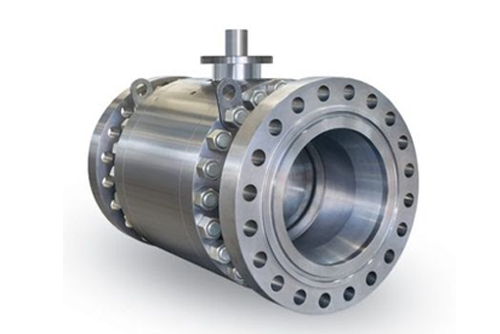
Source: Pinterest
Trunnion valves are quarter-turn valves that are primarily used to start and top the flow of any type of media through a pipe or a tube. Inside the trunnion valve, the ball connects directly to the stem on one end while the other end is held in place by a shaft called the trunnion. What this means is that the ball is held firmly in one place without any movement registering.
This unique design of valve from trunnion ball valve manufacturer gives the ball valves an edge over most of the other valve types, and this is well illustrated below.
Advantages
It can be used in high-pressure situations as it is more stable as the ball doesn’t move around. This ensures the valve maintains a proper seal on either side without any torque being added to the shaft. This gives it the strength it needs to handle high pressures.
They come with spring-loaded seats that help the industrial valve also handle low pressures at the same time without any adjustments being manually done in between. Simply put, these springs help balance things out when the pressures fall low or suddenly shoot up without any warning.
Operating a trunnion-mounted ball is cheaper since any extra pressure applied to the valve is immediately absorbed by the steam and the trunnion. This simple mechanism lowers the torque significantly, which in turn eliminates any need for installing a large-scale actuator.
Disadvantages
Owing to the fixed nature of the trunnion ball valve, fixing or conducting maintenance on it is very difficult. The only way anything can be done is to stop the entire system just by handling a single part of the valve. This is counterproductive.
Without proper maintenance, the welded parts of the trunnion ball valve begin operating at higher friction, and this impacts the efficiency negatively as there’s a lot more torque produced, and that consumes more energy.
Applications
Chemical Plants: Chemicals can be dangerous if caution is not exercised, and their transmission has to be managed with a keen eye, considering how corrosive they can be. The full-proof sealing that comes with trunnion ball valves helps prevent any of that from happening during the manufacturing process.
Petroleum industry: Their leak-proof nature makes them ideal for use in high-pressure systems in the petroleum industry. These metal seat ball valves come in handy in high-volume petrochemical systems and gas pipelines which depend on high pressure for operations.
Power Generation: Power generation methods are many, and each of them relies on complicated systems and machinery to achieve its goals. However, owing to the high pressure and temperature involved in most of them, trunnion valves are widely used to act as safety nets to control the flow without undermining the structural integrity of the entire system.
Electrical Industry: Trunnion balls are widely used in electrical machinery like turbines generators, skids, and compressors, among many others. They serve the function of providing unrestricted flows of varying mediums used in the generation of power.
Hydropower Generation: Hydro-electric plans and any other factory that deals with high water volumes will require very strong and huge pipes that transport the water from one point to another. The only way to ensure that pressure doesn’t overrun them to the point where they burst open is to use trunnion ball valves.
How Does a Trunnion Ball Valve Work
Ball valves mounted on trunnions function similarly to floating ball valves. However, in this instance, a double stem located in opposition to the operating stem anchors the ball. The double stem and bearing is known as trunnion. Trunnion valves need fewer torque to rotate compared to floating ball valves and are practical in various low-pressure and high-pressure applications.
Trunnion ball valves are widely used in a variety of sectors, including pipeline, chemical, oil and gas, electrical, and hydrocarbon. Trunnion ball valves offer a variety of benefits, including less operating expenses and suitability for both low- and high-pressure applications.
The ball is positioned on the trunnion, which serves as its basis. The ball is connected to the stem at the upper end, which is also where the stem is attached to the outer actuator lever. A polymer ring insert and spring-loaded seats are present between the ball and trunnion in a flanged trunnion ball valve. The ball is held in place by the pressure applied by the springs. They lessen the friction when the ball is turning along with the polymer ring.
The center of the ball is hollowed out to help with media flow, and it might be a partial bore or full bore. A ball with a hollow interior that is the exact size as the pipeline is put in and is called a full bore. In contrast, in a partial bore, the pipeline’s diameter is tinier than the diameter of the hollow aspect of the ball.
The stem attached to the actuator twists as well when it is spun. The ball on the trunnion revolves to an open or shut down position as a result of these processes. Seals present in the seats and stem stop the liquid from trickling down the pipeline both during and after liquid flow. A variable gland packing box aids in the valve’s ability to handle various pressure levels.
For depressurization objectives, a conventional trunnion ball valve will additionally contain two bleeders. A trunnion ball valve’s overall design makes it perfect to be used in fluid management applications involving high temperature and elevated pressure.
Conclusion
Both floating ball valves and trunnion ball valves are pretty competent at what they were designed for. Therefore, this is not a question of which one is better than the other; it all boils down to the nature of work you have on the table. Each has its own strengths and weaknesses, and it is up to you to know how to make the most of the choice you go with. For more information on other ball valves like air operated ball valve and how they operate, visit our website, the high pressure ball valves manufacturers and have all your questions handled by our team of experts.

